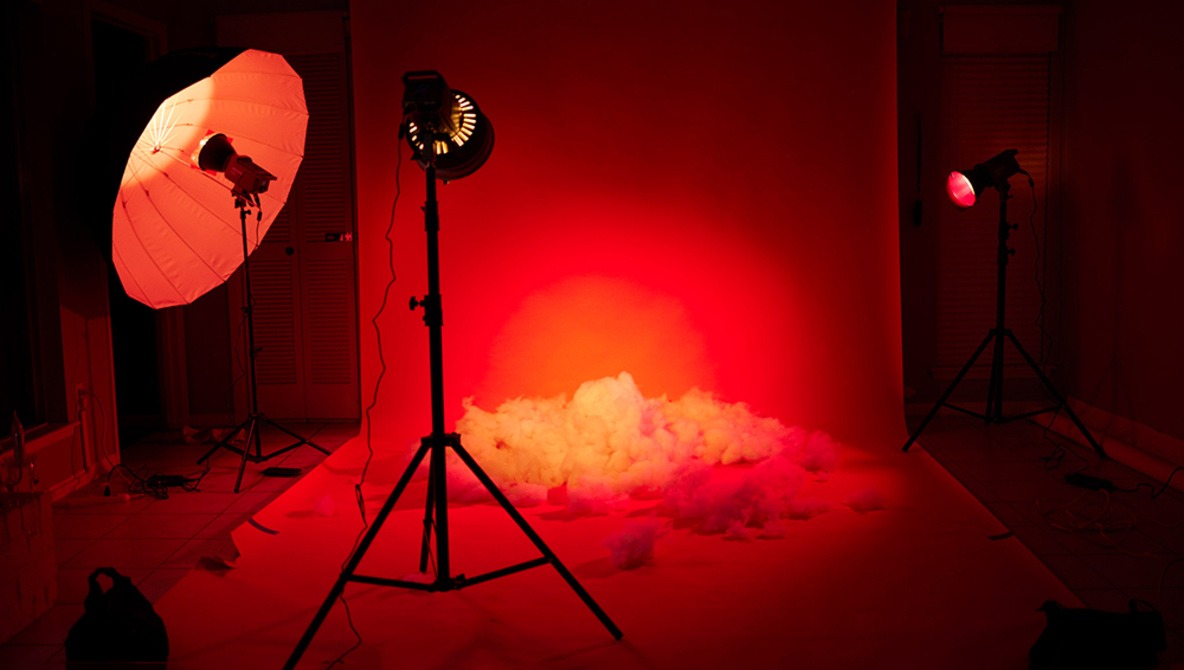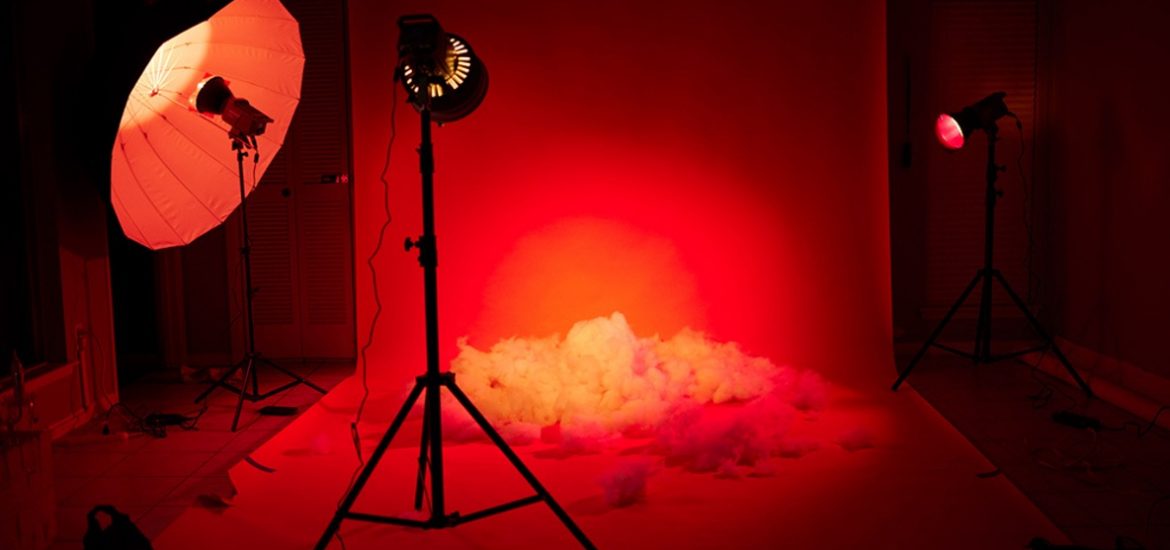
One of the first things you learn when using strobes is the advantages they have over constant lights. Here are the reasons why using constant lights can be better in studio than strobes.
Note: Some images are NSFW.
There are some genres of photography that are simply going to require you to use strobes because you need the depth of field that you get from shooting at f/11 or you need to freeze motion with a fast flash duration. However, if you shooting any kind of portrait, you might want to consider the advantages of using LEDs instead. I reached out to retouching master turned photographer master Pratik Naik, who has been shooting with LEDs for most of his projects this year to get his perspective. Someone who has spent years drilling down to the finest details of high-end beauty, fashion, and editorial shots that have been lit with strobes, I figured would be the best person to talk about the effects that switching light systems would have on the final product.
First, here are some things you need to know about using LEDs.
Factors in Switching to LED
LEDs are significantly less powerful than strobes, which come with serious limitations. You won’t get much use to them outdoors unless it’s very dark. Shooting indoors in the dark is going to require a higher ISO and wider aperture. But it gives you a different look. Instead of the crisp look of shooting at f/8 with precise shadows, your pictures are going to be softer from shooting with apertures like f/1.8, and you might even have some motion blur to your images because your shutter speed is important again, unlike shooting with strobes, where you rely on the flash duration instead of shutter speed to eliminate motion blur. It’s an artistic choice that you should be able to have in your arsenal.
Incorporating Video in Your Shoots
One of the obvious effects of constant light is the “what you see is what you get” situation where you are looking at exactly what the final image is going to be. If you are a beginner, this can be helpful to help you understand the precise angles of lighting patterns on people’s bodies. You can mimic that to an extent with modeling lights from strobes to get an idea of where the light is going to hit the model, but the modeling lights are typically not very bright and they don’t give you a complete final look until you hit the shutter.
This becomes a huge factor when you are incorporating video into your shoots. Your videos and your stills are going to come out lit the same without moving or replacing any lights. Whether it is for Reels on Instagram, or TikTok videos, or just to create content on YouTube, video is an increasingly important asset to be able to deliver to clients from professional shoots.
Even if you are a human light meter and already know exactly how the shot is going to look before you hit the shutter, you cannot get quality video using modeling lights from strobes. It also makes for more impressive BTS if the BTS footage is capturing exactly what the photographer is seeing.
No Recycle Time
Constant lights also have no recycling time. That means you can shoot rapidly and not miss any shots. This is helpful when capturing emotion. One of the most important things I learned from Peter Hurley is that the most genuine smile comes right after a laugh. Being able to capture small moments like smiles, or hair falling perfectly in front of the face, or the small candid moments in between poses is sometimes the most important. Shooting a flash at 11 frames a second to try to capture a genuine smile going to make that smile go away really fast.
Get More Pop in the Eyes
Having a model next to constant lights also affects the anatomy of the eye. When you use constant lights, the pupils constrict and you get more color in the eyes from the iris, which creates a beautiful look that you cannot replicate with strobes. You want to be careful to not have the light too bright so you don’t blind your model.
Shaping the Light
This is one of the biggest issues with LED. Strobes have universal mounts, and you can use softboxes, stripboxes, and reflectors and umbrellas of different shapes and sizes with a wide variety to choose from. With LEDs, your options are different generally because of the shape of the lights. There are two types of LEDs generally: the tiny bulbs that are arranged across a surface like a panel or a strip inside of a tube and chip-on-board (COB) LEDs with a large single source. If your lights are spread across a panel, then you are probably looking at only being able to use an umbrella. On the other hand, many COB lights, because they more closely resemble the body of a strobe will have universal mounts such as a Bowens mount, and you can use them with any of your modifiers.
But the odd shape of the lights is also something that gives them an edge over strobes. For example, several companies make small battery-powered light tubes or phone-sized LED panels. These make great accent lights that you can hide in a scene and get angles of light that you simply would not be able to get with a strobe. Likewise, because LEDs take up such little space, they are perfect for creative applications such as fake windows.
From Pratik Naik
Lighting is a mutual love of all photographers. I think it’s our love language, and the choices today truly spoil us. Whether it’s flash, ambient lighting, or constant lights, I think they each have their unique benefits based on your shoot. Specifically talking about constant lights, there are a few reasons why I like using them for many shoots of mine. Although I started on flash and ambient, I recently started to realize constant light has a really important role in my work.
I like how I’m able to set up much faster. When I adjust my lighting on the fly, I don’t need to take any test shots because I can see the adjustments live. Shooting mirrorless, the LCD screen shows me exactly what I’m about to capture. These two things make it very quick and enjoyable. So, I end up shooting quicker, and as a result, the energy keeps flowing on set. It aids in capturing the beautiful moments you otherwise might not discover from testing as much. Even though I’m fast with setting up my flash setups, it’s still a little hard to beat with how fast immediate feedback is with constant lights.
The downside, of course, is how you really can’t shoot at f/11 or anything without a ton of power, in which case I would want to use flash. So, for these ambient setups, I typically use f/4 and below. I pick between what I’m using based on what depth of field I want to.
Recently upgrading to my R5, I’ve been able to use eye-AF more reliably, and it expedites it even further. When capturing emotion, we all know how important it is to reduce anything that gets between the subject’s energy and your time capturing it. It also saves cost on studio time if you’re ever renting!
Whenever I have beautiful setups with lots of color and warmth, it sets the tone and visually communicates that. The models I work with tend to use that, and they emote more readily when they sense the mood of the lighting. It’s not something I expected to happen. I also love that I can see the nuanced shift in shadows and highlights and how it falls on my subject. If it’s not perfect, I can make precise adjustments. Surely, you can also do that with flash and the modeling light, but I know that the image captured won’t be an exact representation of what I’m seeing, so there’s a bit more play involved.
I often shoot at f/1.2 as well, and the constant lights allow me to get down to quite a low power level for me to operate there. The increments of change are visually noticeable right away, as mentioned earlier.
Another downside, though, is if the scene I’m in has quite a lot of ambient light, I would be fighting with it, so control of the area is really important in deciding on lighting. I often end up using ambient as a fill in these scenarios too.
I think the most important element these days I’m capturing stills and video and switching between the two. If a model is flowing and I love a particular movement they did, I’ll switch over to video and quickly have them repeat it. It keeps the energy and flows very natural, and I don’t need to change up my setup to do video either. It matches the stills perfectly. It also looks fantastic for BTS footage as well when I have a videographer on set or when a team member takes the shots!
I love using a variety of equipment. In this particular set of images and video, I was using a set of Aputure 200x lights, which are bicolor LED lights. I also have a Nanlite FS300, which is my stronger portable light that does not need ballast either. Just plug and play! They each take a Bowens mount, and my favorite modifiers are typically a fresnel lens and deep umbrellas. I love the fresnel for the ability to truly control the spread of light and how even the spread is without a noticeable hotspot while still being a decent hard light. I also love the deep white umbrellas from Elinchrom (which I use for my flash too), which give me beautiful soft light and great spread! I also utilize bare “bulbs” as well or with a variety of reflectors if I want more efficiency in output.
Images used with permission of Pratik Naik
